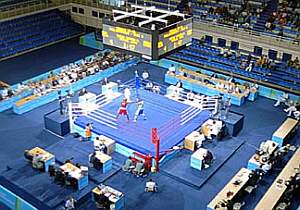
|
Philippines, 27 Nov 2024 |
Home >> News |
 |
||||
|
|
|
|
2012 OLYMPICS: BOXING?S HISTORY GOES BACK TO ENGLAND By Maloney L. Samaco PhilBoxing.com Wed, 06 Jun 2012  Boxing emerged in England during the early 16th century in the form of bare-knuckle fighting sometimes referred to as prizefighting. The first documented version of a bare-knuckle fight in England was recorded in 1681 and the first English bare-knuckle champion was James Figg in 1719. This was the first time when the word "boxing" was first used. On January 6, 1681, the first recorded boxing match took place in Britain when Christopher Monck, the 2nd Duke of Albemarle, who would later become Lieutenant Governor of Jamaica, organized a bout between his butler and his butcher with the latter winning the prize. Early boxing fights had no written rules. There were no weight divisions or round limits, and no referee and fights were awfully disorganized. The first boxing rules were called the Broughton's rules and were introduced by champion Jack Broughton of England in 1743. The main purpose is to safeguard the boxers in the ring where deaths sometimes happened. Under these rules, if a fighter went down and could not continue after a count of 30 seconds, the fight was over. Hitting a downed fighter and punching below the waist were prohibited. Broughton also encouraged the use of "mufflers" or padded gloves, which were used in training and exhibitions. In 1838, the London Prize Ring rules were formulated and were later revised in 1853. In 1867, the Marquess of Queensberry Rules were drafted by John Chambers for amateur championships held at Lillie Bridge in London for lightweights, middleweights and heavyweights. These rules were published under the support of the Marquess of Queensberry, and thereafter the name was always related to these rules. There were twelve rules and they specified that fights should be "a fair stand-up boxing match" in a 24-foot-square or similar ring. Rounds were three minutes long with one minute rest intervals between rounds which are still used today. Each fighter was given a ten-second count if he was knocked down and wrestling was banned. The introduction of an average pair of gloves resembles the modern boxing gloves. Through the late nineteenth century, boxing or prizefighting was outlawed in England and prizefights were often held at gambling venues and raided by police. Brawling and wrestling tactics continued, and riots at prizefights were common occurrences. Still, throughout this period, there emerged some famous bare-knuckle champions who developed fairly sophisticated fighting tactics. In 1882 the court decided that a bare-knuckle fight was an assault causing authentic bodily destruction, despite the approval of the participants. This marked the end of the prevalent public bare-knuckle contests in England and paved the way for the emergence of modern boxing. In the Olympics, both the men?s and women?s boxing events will cover a single elimination format. The draws for the men?s weight categories include either 16, 26 or 28 boxers, depending on the category. The women?s competition will have a draw of 16 boxers or will automatically be at the quarter-final stage. There will be 286 competitors for boxing in London, 250 men and 36 women. The winners of the two semi-final bouts in each weight category will fight for the gold medal. The losers of the semi-finals are each awarded a bronze medal. Click here to view a list of other articles written by Maloney L. Samaco. |
|
|
PhilBoxing.com has been created to support every aspiring Filipino boxer and the Philippine boxing scene in general. Please send comments to feedback@philboxing.com |
PRIVATE POLICY | LEGAL DISCLAIMER
developed and maintained by dong secuya © 2024 philboxing.com. |